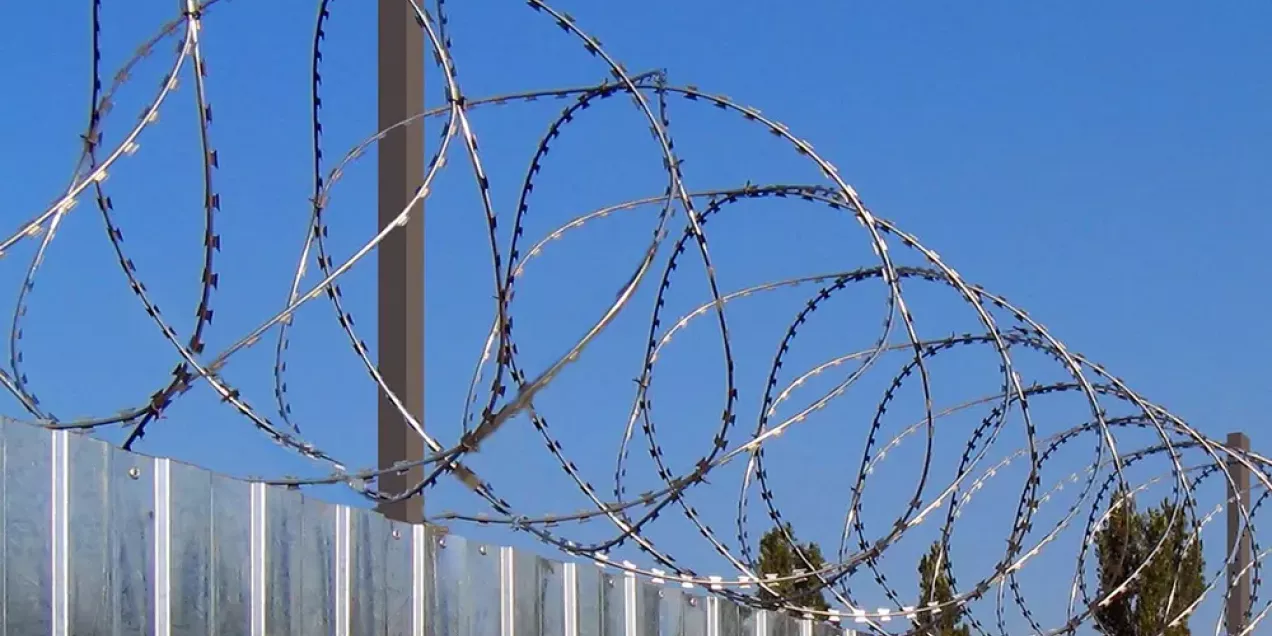
Mounting Egoza on a fence is one of the most widespread methods of using reinforced razor wire. This approach makes it possible to reinforce existing fences without the need for full replacement, significantly enhancing the level of physical security. Mounting Egoza on a fence is used on industrial, military, commercial, and private sites. It is a cost-effective and efficient solution that requires minimal materials and can be implemented on both new and existing fences. It is important to select the appropriate barrier type, choose the right mounting method, and follow safety regulations during installation.
Main Advantages of This Solution
One of the key benefits of mounting Egoza on a fence is the maximum use of existing infrastructure. There is no need to install additional posts, foundations, or concrete supports – reinforced razor wire is attached directly to the top of the fence or to special brackets. This significantly reduces material and labor costs.
Additionally, the visual effect of Egoza on a fence serves as a strong psychological deterrent: even approaching such a perimeter feels dangerous. At the same time, the fence retains its main functions: passage, access control, and visibility.
Which Types of Barriers Are Suitable for Installation
The most common option is to mount a concertina Egoza barrier with a diameter of 400-900 mm. It is installed using brackets mounted vertically or at an angle (usually facing outward from the protected area). In some cases, a double-row spiral is used to increase security.
It is also possible to install a flat Egoza barrier along the fence, especially if the fence is made of mesh or metal rods. In such cases, the sections are fixed to horizontal rails or support posts.
Mounting Options and Components
Egoza is mounted using metal brackets (L-shaped, T-shaped, or V-shaped) that are welded, bolted, or clamped to the fence posts. The bracket size and shape depend on the height and diameter of the concertina. Additional stability is ensured with guy wires, fasteners, connection clips, and galvanized steel clamps.
It is recommended to use corrosion-resistant components – especially if the barrier will be used outdoors. All elements must be designed to support the weight of the Egoza and withstand external loads such as wind, snow, and physical impact.
Main Installation Steps
- Inspect the condition and stability of the fence;
- Install brackets on the top or side surfaces of the posts;
- Prepare Egoza coils: check integrity, select proper length;
- Fix the initial loop and stretch the concertina along the perimeter with even spacing;
- Connect the loops with clips or wire ties;
- Secure the ends of the barrier and check all fastenings for strength.
Safety Measures During Installation
Installing Egoza requires the use of protective gear: gloves, goggles, safety clothing, and long-handled tools. The sharp blades of the razor wire pose a real hazard to workers. Installation should be carried out by at least two people. If working at height, fall protection equipment must be used.
Additional Recommendations
To prevent premature fence deterioration, it is recommended to treat contact points with anti-corrosion compounds. On long perimeters, mounting points should compensate for thermal expansion (especially when using galvanized steel). Installation should be done in dry weather to avoid slips and injuries.
Learn more about ground-based Egoza installation or explore combined installation systems if you are planning more complex perimeter protection solutions.